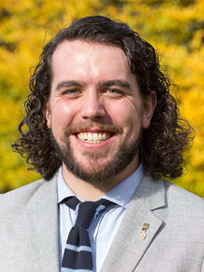
Derek O'Neill
Areas of interest
Bioarchaeology, Human Osteology, Mortuary Archaeology, Forensic Anthropology, Northwest Coast Archaeology
Education
- MA: Heritage Resource Management
- BA: UNBC 2009
MA Theses in HRM: Derek O'Neill, 2020
Where are the children?
An experimental archaeology study concerning the role of practitioner bias in the recovery of juvenile skeletal remains
Committee
Dr. Hugo Cardoso, Associate Professor, Supervisor
Dr. Darcy Mathews, Assistant Professor, Environmental Studies, UVic, Committee Member
Dr. Francesco Berna, Associate Professor, External Examiner
Dr. Christina Giovas, Assistant Professor, Chair
Abstract
Juvenile skeletal remains are generally underrepresented in the archaeological record, despite the high infant and child mortality rates in prehistoric and pre-modern populations. The invisibility of juvenile skeletal remains has often been attributed to several factors, including environmental, cultural, and methodological filters. These include taphonomy, differential burial patterns, and the methods employed by archaeologists. However, practitioner bias, the prejudice of archaeologists in field projects, also plays an important role. To evaluate how practitioner bias affects the identification and recovery of juvenile skeletal remains, an experimental archaeology study was conducted. In total three mock excavation units were constructed comprised of two control units and one experimental unit. All units contained replica material culture and one contained the macerated skeletal remains of one juvenile pig (Sus scrofa) as a proxy for in situ human juvenile skeletal remains. During this blind study, a total of 28 participants excavated the units. Participants were grouped into four groups based on experience in heritage resource management and background in human osteology. Participants were evaluated based on the recovery rate of replica material culture and skeletal elements through both intragroup and intergroup analysis. The initial hypothesis was that more experienced participants or participants with human osteology would recover a higher proportion of skeletal remains than those who are less experienced or do not have specialized training in osteology. The results of the study contradict this expectation/hypothesis, with less experienced participants generally recovering a higher proportion of skeletal remains than those with more experience. The results reflect the epistemology of present day commercial archaeology– how the inculcation into professional archaeology can modify an individual’s a priori beliefs, develops individual confirmation bias, and illustrates how current methods and attitudes are typically insufficient for the complete/successful/reliable recovery of juvenile skeletal remains.
Keywords: juvenile osteology; experimental archaeology; funerary archaeology; mortuary archaeology; heritage resource management

